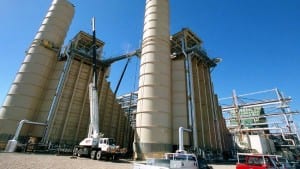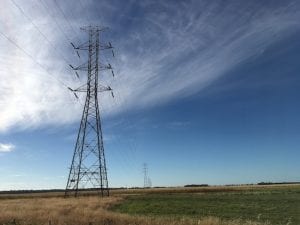More organization, more oversight and more responsibility are required – not less.
The Germans call it the “Energiewende” , the energy turnaround. In Australia the energy transition is proceeding rapidly, perhaps not rapidly enough and somewhat chaotically.
At the moment the main market and system bodies face literally hundreds of rule change requests – some of them big, some of them small. Yet at a Federal Level ITK’s perception is that the current government is trying its hardest to prevent change, to throw sand in the gears, to act to help its favourites by any means possible and to do it as secretly as possible.
Folks calling for a “green stimulus” – or whatever the phrase is – are well meaning but naïve beyond what is reasonable. A Government that appoints Keith Pitt as resources minister, Angus Taylor as minister determining the fate of the energy system, and a governing Coalition that has hard line Queenslanders as its biggest voting bloc of parliamentary members is not going to take any notice of well meaning scientists who have the interest of all Australians at heart. More cunning is required, particularly with the demands of the CFMEU also needing to be negotiated.
There are ex politicians, such as John Hewson and Bob Carr who are on the side of the angels. So, too, are virtually all state governments. But they aren’t organized and the antipathy between Queensland premier Palasczuck and her NSW counterpart Berijiklian doesn’t help. But the long term prize is the future for Australia, and the short term prize is political greatness.
The very short term objective has to be to keep the Energy Security Board in place. Kerrie Schott won’t be able to continue her work for eve,r but the ESB right now has the absolutely essential job of redesigning the electricity system. And then beyond that is execution of the plan.
Regulatory framework review
Here’s a reminder of how direction, oversight and responsibility for managing the NEM (National Electricity Market) has been organized for the past few years.
The ESB emerged from the Finkel Report as a result of dissatisfaction of how the energy transition was being managed.

Hands up if you think the energy transition is finished?
Last week, due to a short term dip in wind output, and because it’s winter, the renewable energy’s share of the main grid was down below 15%. But that’s not the point: The ESB is in the middle of a major review of the market design post 2025. How can anyone seriously think it needs to be shut down now? If anything it needs more resourcing.
See ESB left in limbo after stalemate in ‘confidential’ energy ministers meeting
Here’s another recommendation from the Finkel Report
“By mid-2018, the COAG Energy Council should develop and maintain a strategic energy plan informed by the Panel’s blueprint to guide the operation and evolution of the National Electricity Market.” Finkel recommendation 7.1
I guess you could see the post 2025 design review as along those lines. Certainly, the Integrated System Plan [ISP] is not that, although it might have become it. As it stands the ISP is just a transmission planning document. And the only reason the ISP has made as much progress as it has is because of the backing of the ESB.
Only the ESB has the vision and potentially the authority as the executive organization responsible to the States as well as the Federal Govt to oversee the changes required. It should be strengthened and nurtured. And perhaps State Representatives should be ex officio members.
Poor process to make COAG Energy Council meetings secret
Good policy stems from good evidence. The secrecy provisions of the quasi cabinet nature of the new sub committee make it more difficult for the industry experts, whether the ESB, AEMO, AEMO, AER or executives from the States to provide “evidence” directly to COAG. This is to be regretted as it is so easy for a committee to go off course, to get away from facts and evidence.
AEMO’s modelling has been sub standard. That’s cost a lot of investors a lot of money
Its unacceptable for AEMO to certify a generator performance standard, and then after it’s met by the generator iit tells the generator its not allowed to generate. Because of the rapid growth in the system, investors have been very tolerant, and in any event, there isn’t much they can do.
Nevertheless, patience must be wearing thin as first the solar generators in North West Victoria, then the generators in far North Queensland and now the Dundonnell wind farm in Victoria are all told they can’t do what they were licensed to do, ie generate at full power.
And that’s before we get into the MLF (marginal loss factor) debacle, which of course is no one’s fault (failure being an orphan).
It’s tempting to argue that there should be some penalty on AEMO for not being able to deliver satisfactory modelling outcomes, but penalizing AEMO would likely just lead to overly conservative outcomes and even longer delays.
The better answer is just for AEMO to do a better job.
As AEMO’s 2019 Annual Report acknowledges AEMO has taken on more responsibilities (operation of the WEM, SWIS and gas market functions) at a time when its struggling with its core function, managing the NEM.
And the point to be made is that AEMO needs all the help it can get and the ESB provides some of that help.
AEMC has done a terrible job, but perhaps that will change
There is no need to revisit the AEMC failings again as we’ve previously done. See our analysis: John Pierce’s legacy: Blinkered policies are fragmenting NEM
Suffice to say that the AEMC has been a road block and that if a carbon objective was in the National Electricity Objective, perhaps it would be different. ITK looks to a change of leadership at the AEMC to hopefully bring a more collaborative and more practical approach to rule making.
One set of rules we are keeping an eye on is proposals around “System Services”, see the Consultation Paper. Here you can find proposals for “fast frequency markets” and a potential change to the harmful “do no harm” rule.
AER struggles to add value due to its focus on cost over value
Since the debacle associated with the unsuccessful attempt to cut down NSW regulated wires and poles returns the AER (Australian Energy Regulator) has generally got what it wanted. Appeals against its decisions are now unlikely due to the cost and the inability to cherry pick in front of a “willing to listen” Tribunal. Still ,all of that was to an extent shutting the stable after the horse had bolted.
However, the bigger issue is that the AER mission, protecting the interests of consumers, has translated into a focus on providing a revenue cap for a regulated business that is as low as possible. But this sort of approach, and indeed the entire function of regulated wires and poles in a world of “prosumers”, multiple function batteries and a grid that needs to be technically reconfigured, is basically pretty useless.
The AER can have basically no idea of what’s technically required of networks going forward, that’s not its role. Other than determining the cost of capital the AER essentially outsources to consultants the operating and capital expenditure reviews of plans put forward by the network business. Ring fencing introduces “friction” into the system, but protects from monopoly power.
The dead hand of minimum price regulation discourages innovation, risk taking and new investment. In some international jurisdictions, eg Florida they make it work but it seems to be harder here.










